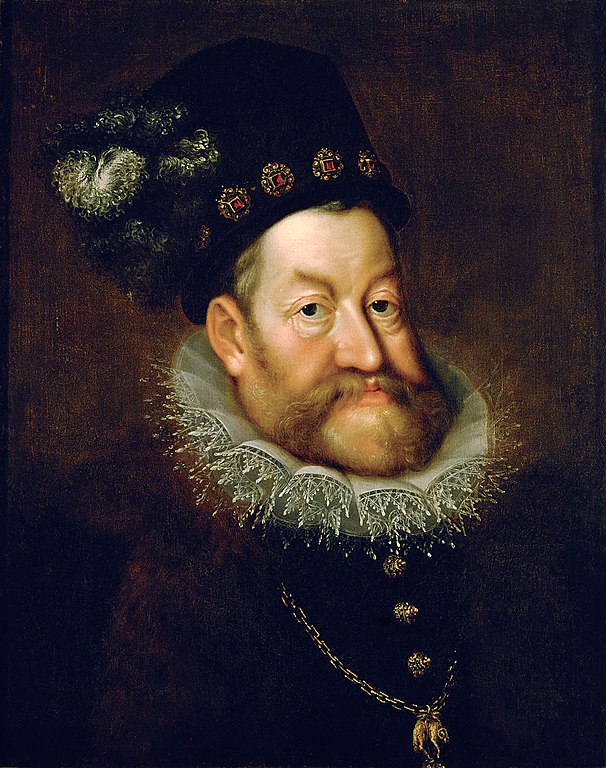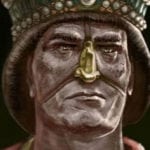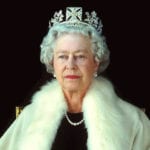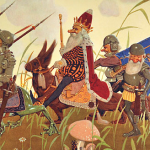 Mysteries
Mysteries  Mysteries
Mysteries  History
History 10 Surprising Stories About the Texas Rangers
 Humans
Humans 10 Philosophers Who Were Driven Mad by Their Own Theories
 Miscellaneous
Miscellaneous 10 Video-Game-Worthy Weapons and Armors from History
 Weird Stuff
Weird Stuff 10 Psychics Who Accurately Predicted Wartime Events
 The Arts
The Arts 10 Pieces of Art Inspired by a Broken Heart
 Health
Health 10 Science Fiction-Sounding New Medical Treatments
 History
History 10 Surprising Facts About the Father of Submarine Warfare
 Space
Space Ten Astonishing New Insights into Alien Worlds
 Weird Stuff
Weird Stuff 10 Bizarre Summer Solstice Rituals Still Practiced Today
 Mysteries
Mysteries Top 10 Haunting Facts About the Ghost Ship MV Alta
 History
History 10 Surprising Stories About the Texas Rangers
 Humans
Humans 10 Philosophers Who Were Driven Mad by Their Own Theories
Who's Behind Listverse?

Jamie Frater
Head Editor
Jamie founded Listverse due to an insatiable desire to share fascinating, obscure, and bizarre facts. He has been a guest speaker on numerous national radio and television stations and is a five time published author.
More About Us Miscellaneous
Miscellaneous 10 Video-Game-Worthy Weapons and Armors from History
 Weird Stuff
Weird Stuff 10 Psychics Who Accurately Predicted Wartime Events
 The Arts
The Arts 10 Pieces of Art Inspired by a Broken Heart
 Health
Health 10 Science Fiction-Sounding New Medical Treatments
 History
History 10 Surprising Facts About the Father of Submarine Warfare
 Space
Space Ten Astonishing New Insights into Alien Worlds
 Weird Stuff
Weird Stuff 10 Bizarre Summer Solstice Rituals Still Practiced Today
10 Royals Who Dabbled in the Occult
Nowadays, matters of alchemy and the occult are largely regarded as pseudoscience, but in the past, supernatural practices were taken more seriously. For example, the idea of a philosopher’s stone that could turn base metals into gold and grant immortality goes back to at least ancient Greece. Throughout the centuries, many people sought (and failed) to prove its existence. The occult was also a hot topic during the Renaissance; astrology was sometimes studied as a science, while the fear of dark magic led to feverish witch hunts. Here are 10 royals, historical and modern, who have dabbled in the occult.
Related: 10 Dark and Esoteric Occult Practices From History
10 Queen Elizabeth I
In 1555, John Dee was arrested for witchcraft after casting the horoscopes of Queen Mary I of England and Princess Elizabeth. However, he was exonerated and, a few years later, found favor with Elizabeth once she became queen. She even trusted him to select an auspicious coronation date for her, which was January 15, 1559, based on his astrological calculations. In 1564, he was “appointed Royal Advisor in mystic secrets,” and as her court astrologer, he also advised her on matters of state and science.
Elizabeth’s interest in mysticism seemed to stretch no further than astrology, while Dee delved deeper into the supernatural, believing he could communicate with angels through a medium. Dee fell out of favor when James I took the throne. He was once again accused of conjuring, and the new king refused to clear his name. James hated the occult and witchcraft so much that he published an entire book, Daemonologie (1599), devoted to the subject.[1]
9 Queen Victoria
It has been speculated that Queen Victoria of England took part in séances, but nothing has ever been officially verified. This may be because the queen never actually had any interest in the occult. Or it could be because, after her death, her journals and letters were censored by her daughter, Princess Beatrice.
There is speculation that in 1846, Georgiana Elizabeth Eagle, a child clairvoyant, performed before Victoria and her husband, Albert, at Osborne House. Then in 1861, after Albert’s death that year, it is rumored that a teenage medium named Robert James Lees fell into a trance during a séance and channeled the departed spirit of Albert. Lees may then have conducted séances for Victoria to speak to her dead husband.
It has also been claimed that John Brown, Victoria’s favorite and long-rumored lover, acted as a medium to channel Albert. Still, there is no historical record of these conversations taking place.[2]
8 Empress Alexandra Feodorovna
Alexandra Feodorovna was Queen Victoria’s favorite granddaughter and became a part of the Russian Romanov family when she married Emperor Nicholas II in 1894. Their son Alexei was born in 1904 and suffered from hemophilia, a condition where the blood does not clot properly. Alexandra believed in the occult, participating in séances and speaking with clairvoyants, and she sought the aid of Grigori Rasputin, now known as one of the world’s most famous mystics.
Alexandra and Nicholas brought Rasputin into their inner circle to heal their son, although some were riled by this, regarding him as a charlatan. But the couple were convinced of his magical powers, believing he could stop Alexei’s excessive bleeding. Some modern historians now think that it was actually Rasputin’s insistence that the boy not be treated with aspirin (which thins the blood) that caused his seemingly miraculous healing.[3]
7 Holy Roman Emperor Rudolf II

As well as juggling his many political responsibilities as Holy Roman Emperor, King of Hungary and Croatia, King of Bohemia, and Archduke of Austria, Rudolf II was also deeply involved in researching the occult. While matters of dark magic and witchcraft were criminalized during the Renaissance, astrology and alchemy were often regarded as legitimate scientific fields. When Rudolf moved the royal court to Prague Castle, the city became a center for the practice of alchemy.
Notable alchemists who visited his court include John Dee, Elizabeth I’s astrologer, and his companion-cum-medium, Edward Kelley. Rabbi Judah Loew ben Bezalel also gained an audience with Rudolf, where the two discussed Kabbala, the Jewish mystic interpretation of the Bible. Rudolf is also the earliest known owner of the Voynich manuscript, one of the most famous texts written in a code or unknown language that remains undeciphered to this day. It is thought that he may have purchased the cryptic manuscript from Dee, but its history is unclear.[4]
6 Queen Catherine de’ Medici
Catherine de’ Medici was born in Italy and became Queen of France in 1547 through her marriage to King Henry II. She was also the mother of the French kings Francis II, Charles IX, and Henry III, and thus occupied a position of power for many years. Soon after the untimely death of Charles in 1574, a pamphlet circulated accusing her of witchcraft, which led to her becoming known as the Black Queen. It claimed that “through the wave of her wand and bewitching potions, she had changed us into wild beasts and torn out our humanity.”
More fuel was thrown on this fire when Jean Bodin’s book De la démonomanie des sorciers or On the Demon-Mania of Witches (1580) alleged that she had participated in a Black Mass during which a child was sacrificed. While there is no actual evidence of Catherine practicing (or, rather, attempting to practice) dark magic, she was certainly interested in astrology.
Cosimo Ruggeri served as her advisor and astrologer, and in 1555, she invited the seer Nostradamus to court after reading his predictions in Les Prophéties (1555). She had him draw up horoscopes for her children and, in the following years, made him Counselor and Physician-in-Ordinary to the young King Charles.[5]
5 Emperor Yongzheng
Many historical Chinese emperors took alchemical elixirs in an effort to achieve immortality. Although the danger of these potions and pills was not unknown, numerous emperors succumbed to mercury poisoning in their quest for eternal life. The first Chinese emperor to die in this way was actually China’s first emperor, Qin Shi Huang, who died in 210 BC. The last to die via a so-called elixir of life was Emperor Yongzheng, and it was surprisingly recent, occurring in 1735.
At the time, officials said that Yongzheng died from exhaustion caused by overwork. A rumor then spread that he had been assassinated by Lü Siniang, who was seeking revenge for the execution of Lü Liuliang, her father or grandfather (accounts vary). Based on court records, it is now generally accepted that he died from mercury poisoning. The true cause of his death may have been concealed at the time because few people still believed in immortality-granting elixirs, and officials did not want to bring shame to Yongzheng’s name.[6]
4 King Philip II
As well as greatly expanding Spain’s influence across the globe, Philip II of Spain was also a dedicated patron of the arts and sciences, including alchemy. In 1584, the magnificent royal palace of El Escorial was completed, containing within its walls a church, college, library, and even alchemical distillation laboratories. It became a center of knowledge, with Philip furnishing the library with great works of history, science, and literature and inviting alchemists to work in the labs.
In 1591, for instance, Philip brought Irish alchemist Richard Stanihurst to his court after hearing that he had concocted a panacea (a cure-all potion). However, Stanihurst’s experiments with the medicine failed to come to anything. Philip was also interested in transmutation and had people attempting to turn base metals into gold. These experiments likewise failed to produce results. Although panaceas and transmutation are now known to belong to mythology, Philip II’s interest in alchemy stemmed from scientific exploration rather than a preoccupation with the supernatural.[7]
3 Crown Princess Hwi
In the early 1400s, during King Sejong’s rule of Joseon, now modern-day Korea, Crown Prince Munjong married Lady Kim, making her Crown Princess Hwi. Their marriage lasted just a couple of years because Hwi was deposed for practicing witchcraft, or in the words of King Sejong, using “the sorcery of yin and yang manipulation to obtain the favor” of her husband.
The princess had appealed to her lady-in-waiting, Hocho, for help in gaining the prince’s love. Hocho told the princess to do two things: first, to burn the shoes of her romantic rivals and mix the ashes into Munjong’s wine to make him reject them; second, to rub snake sperm onto a piece of cloth and wear it on her body to win his affection. Sundeok, another lady-in-waiting, found leftover pieces of shoe leather from the ritual and raised her suspicions with King Sejong. He questioned the crown princess, and she confessed to everything. Hocho was subsequently executed, and Hwi was stripped of her title and banished from the palace.[8]
2 King Frederick William II
Rosicrucianism, a spiritual movement that began in the early 17th century and sought out esoteric knowledge, counted Frederick William II, King of Prussia, within its ranks. When he was still prince, Frederick William was a member of the Masons, but he yearned for more mysticism than the Masons could offer. He believed that he could hear the voices of ghosts and occasionally held séances to communicate with them. He met a man named Johann Rudolf von Bischoffswerder during the War of the Bavarian Succession (1778–79), and when he fell ill, Bischoffswerder cured him with an esoteric Rosicrucian elixir.
The experience left its mark, and in 1781, Frederick William was officially initiated into the Rosicrucian brotherhood by Johann Christoph von Wöllner. When he became king in 1786, both Wöllner and Bischoffswerder were placed in positions of power. Bischoffswerder had a machine that could supposedly summon spirits, and during one séance held at Charlottenburg Palace, the ghost of Frederick William’s namesake, Frederick William, “The Great Elector,” apparently appeared and told the king to stop seeing his mistress.[9]
1 Princess Märtha Louise
Not all royals who were interested in the occult are long dead and buried. Princess Märtha Louise is currently fourth in line to the Norwegian throne and makes her living working as a clairvoyant. In 2002, she withdrew from the royal household, giving up her official “Her Royal Highness” title and her annual $1 million allowance. She has since made a career from her supposed clairvoyant abilities. She is a motivational speaker and, for a number of years, ran an “angel school,” where she taught clients how to speak to angels and the dead.
In 2019, she faced controversy for using her royal title for financial gain after titling a seminar series, “The Princess and the Shaman,” which she ran with her self-proclaimed shaman fiancé, Durek Verrett. She agreed to stop using the title and, as of November 2022, has officially withdrawn from all royal duties. Still, the couple continues to be criticized by the press for spreading pseudoscience. Verrett has claimed that he can cure illnesses (including cancer) and rotate the atoms in a person’s body to make them younger and that he’s not a regular human but rather a hybrid of “a reptile and Andromeda.”[10]




